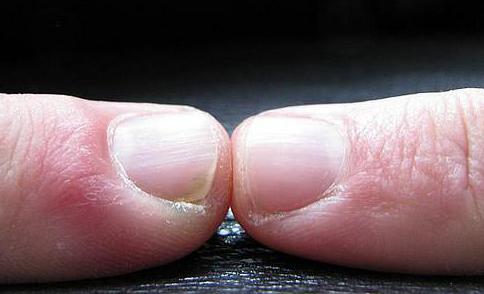At WiseGEEK, we're committed to delivering accurate, trustworthy information. Our expert-authored content is rigorously fact-checked and sourced from credible authorities. Discover how we uphold the highest standards in providing you with reliable knowledge.
What are the Different Types of Fingernail Problems?
There are many types of diseases and disorders that can effect fingernails. Of the dozen or so fingernail problems that doctors encounter, there are a few that are considered very common. This list includes paronychia, pseudomonas, tinea unguis, leuconychia, and beau's lines. The first three need to be treated with medication, while the last two require no treatment.
Paronychia is one of the fingernail problems that causes pain and requires treatment, in most cases. It is usually the result of a tear in the folds of skin around the nail. Bacteria makes its way under the nail and causes pain, redness and swelling. It is most commonly treated by soaking the nail in a solution comprised of 50% warm water and 50% antibacterial soap, three to four times a day, for about 15 minutes each time.

Some fingernail problems are caused by improper maintenance of the nails. Pseudomonas is a bacterial infection that eats away at nail tissue and is usually seen in patients who wear false nails. Many patients believe that they have mold growing beneath the false nail because they see a green hue under it. That discoloration is in fact caused by iron deposits and the human byproducts of decomposition. The nail deepens in color and softens as it dies, and in the worst cases may lift completely from the nail bed. Treatment is to cut the nail very short and minimize getting it wet, although the most extreme cases must be treated with prescription medication.

Tinea unguis is a fungal infection, sometimes called ringworm of the nail. It causes thickening of the nail, nail deformity, and discoloration — and, without treatment, will eventually cause nail plate loss. Those suffering from an athlete's foot infection are more likely to contract tinea unguis. It can be treated with a topical solution or with oral medications when the infection is severe.

Many people become concerned when they see white spots on their nails. These spots are one of the least concerning fingernail problems, and one of the most common. The technical term for them is leuconychia, and they are simply a hereditary abnormality.
Beau's Lines are horizontal lines on the nail. They are usually caused by trauma to the fingernail or nail bed, but can sometimes be an indicator of other health issues. People with malnutrition often have them. There is no treatment for these benign fingernail problems. If the cause is unknown, however, the patient should be assessed to see if there is another health issue occurring that may have caused the lines.
AS FEATURED ON:
AS FEATURED ON:



















Discussion Comments
During the summer when I spend a lot of time outside, my nails really take a beating. If I get in the habit of always wearing gloves when I am working, it helps, but many times I head out the door without them.
If I am going to be pulling a lot of weeds, I will wash my hands and put an organic cleaner under my nails before putting my gloves on. This really helps keep the dirt from getting under my finger nails.
Thankfully my finger nail problems have been mild compared to some who get fungus infections. This is something that you would need to begin treating right away, because they don't go away on their own.
If you have dry, brittle nails rubbing some castor oil is a natural way to help soften your nails and cuticles. Or if your nails are discolored, you can try rubbing some lemon juice on them.
I will always look for a natural way to treat my nail problems before buying a product at the store. Many times you will see the results you are looking for within a few days if you are using them consistently.
If you notice major changes in your nails, it is always best to have a doctor look at them. Your nails can tell a lot about what is going on inside your body.
Post your comments